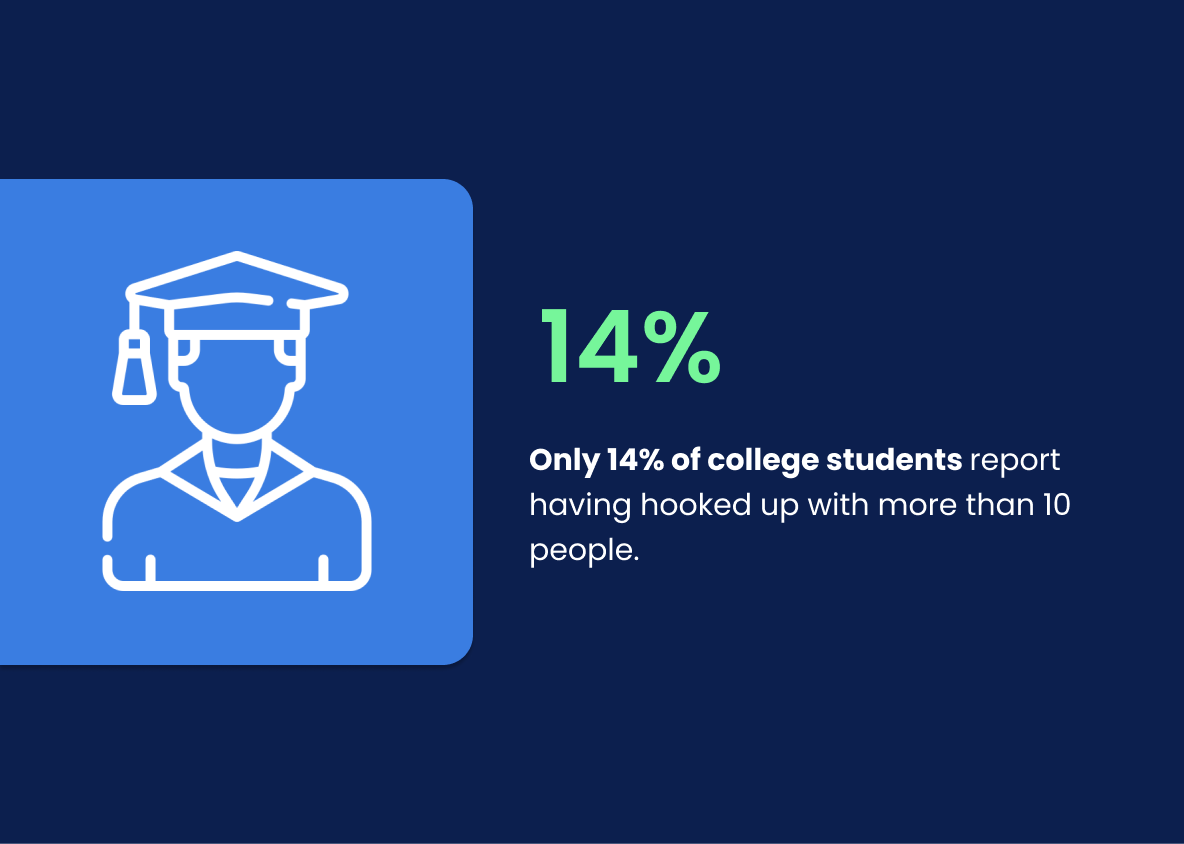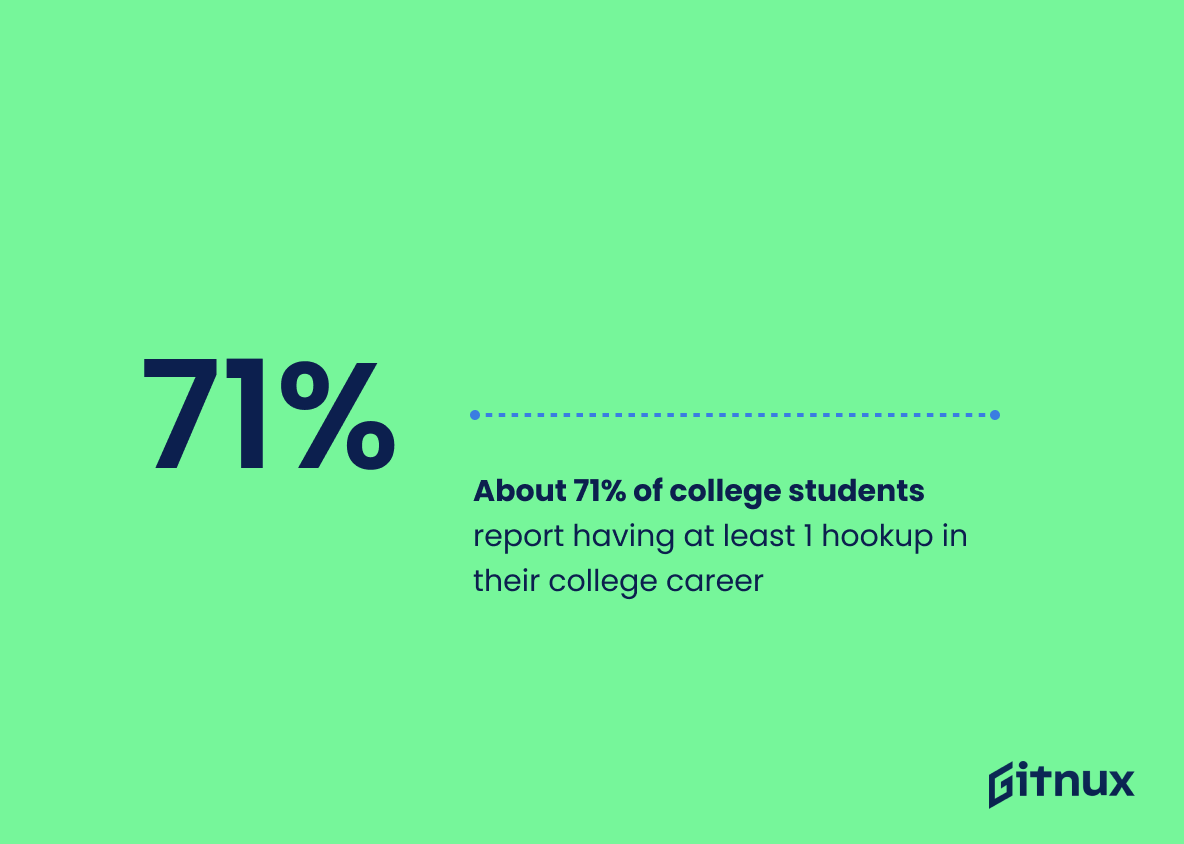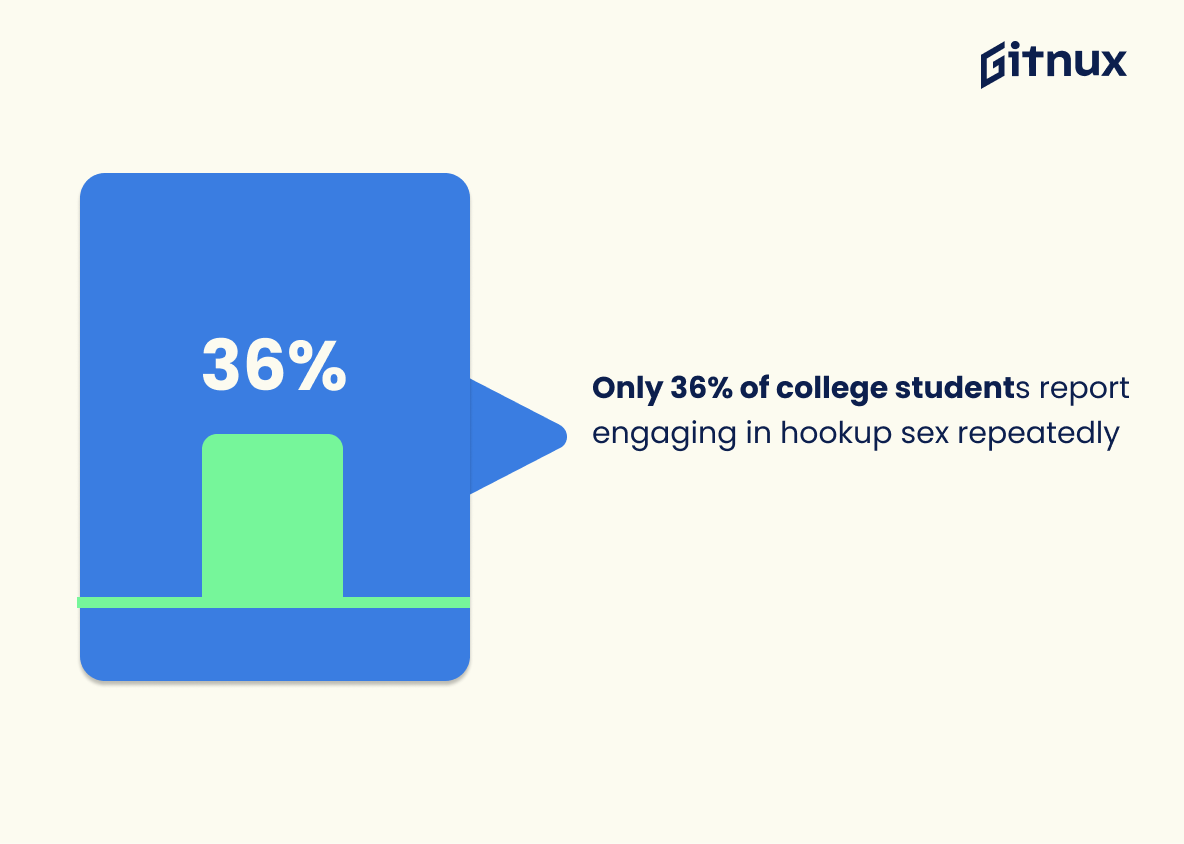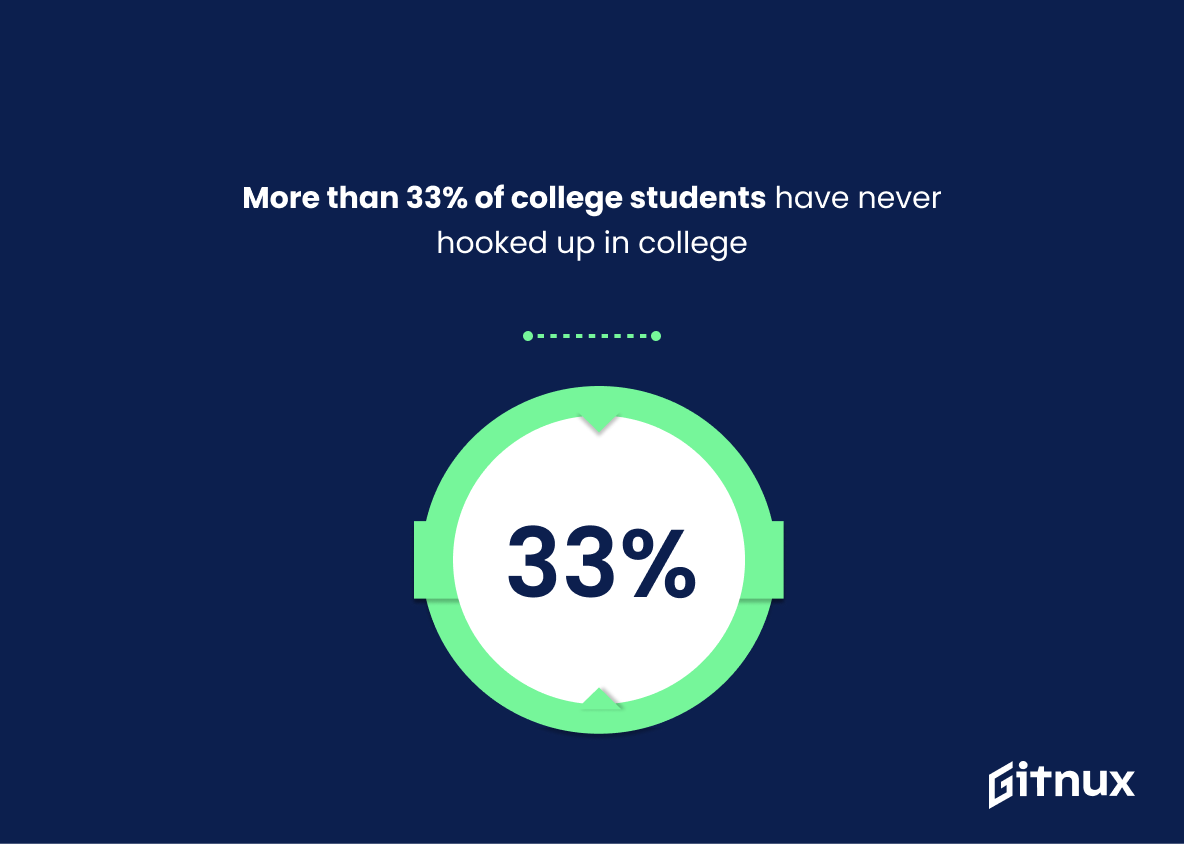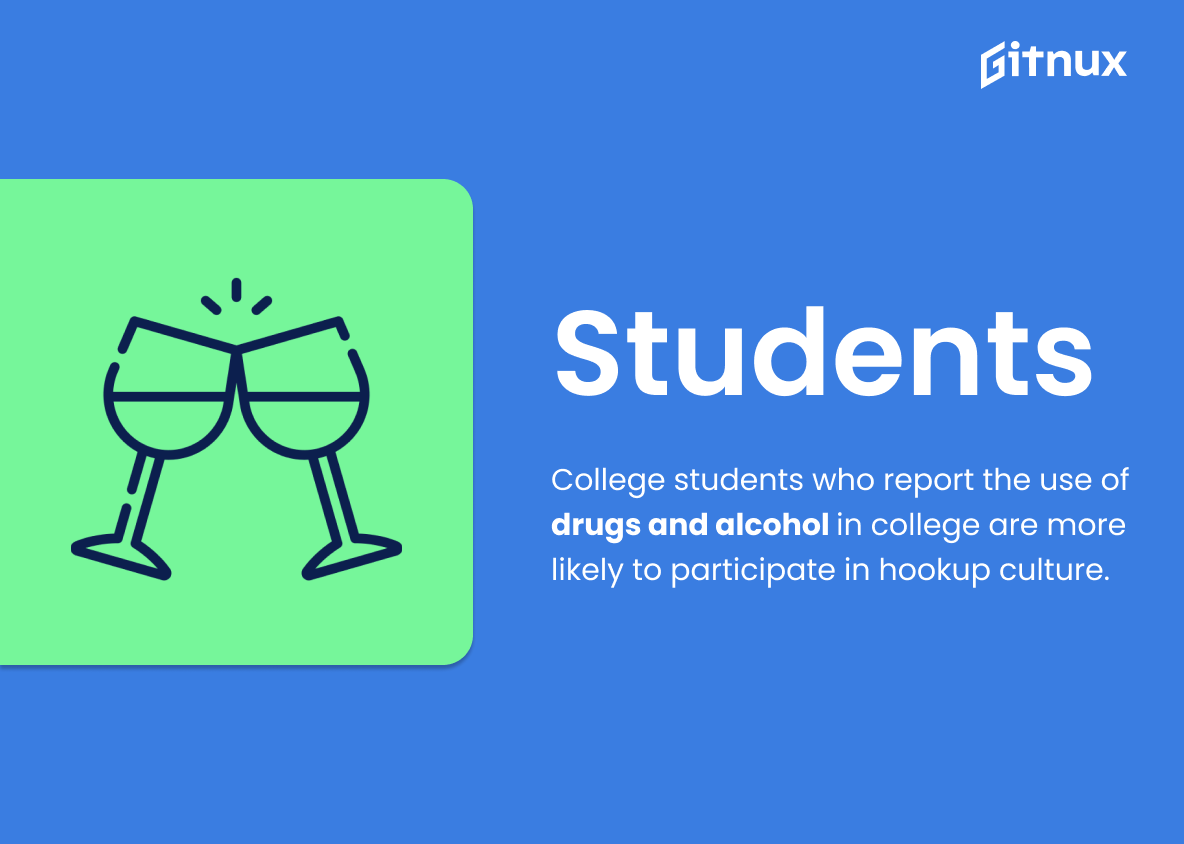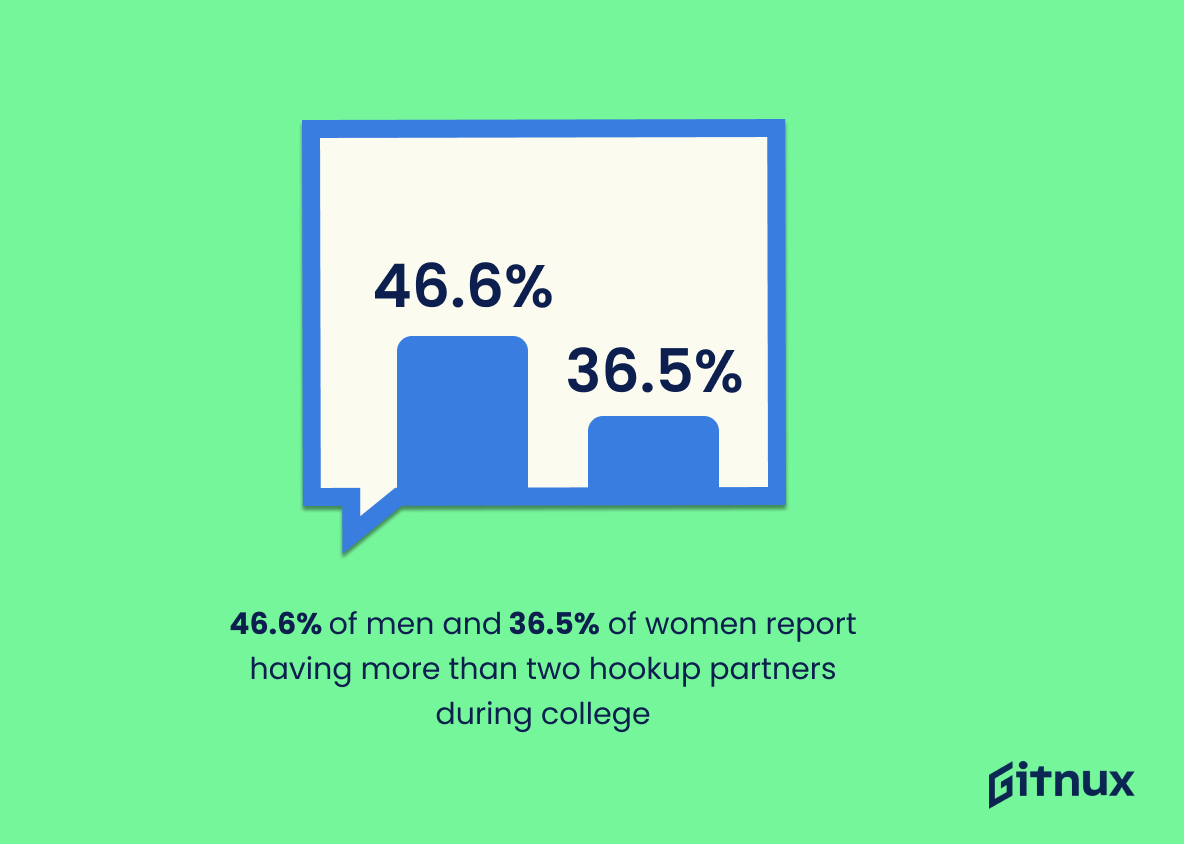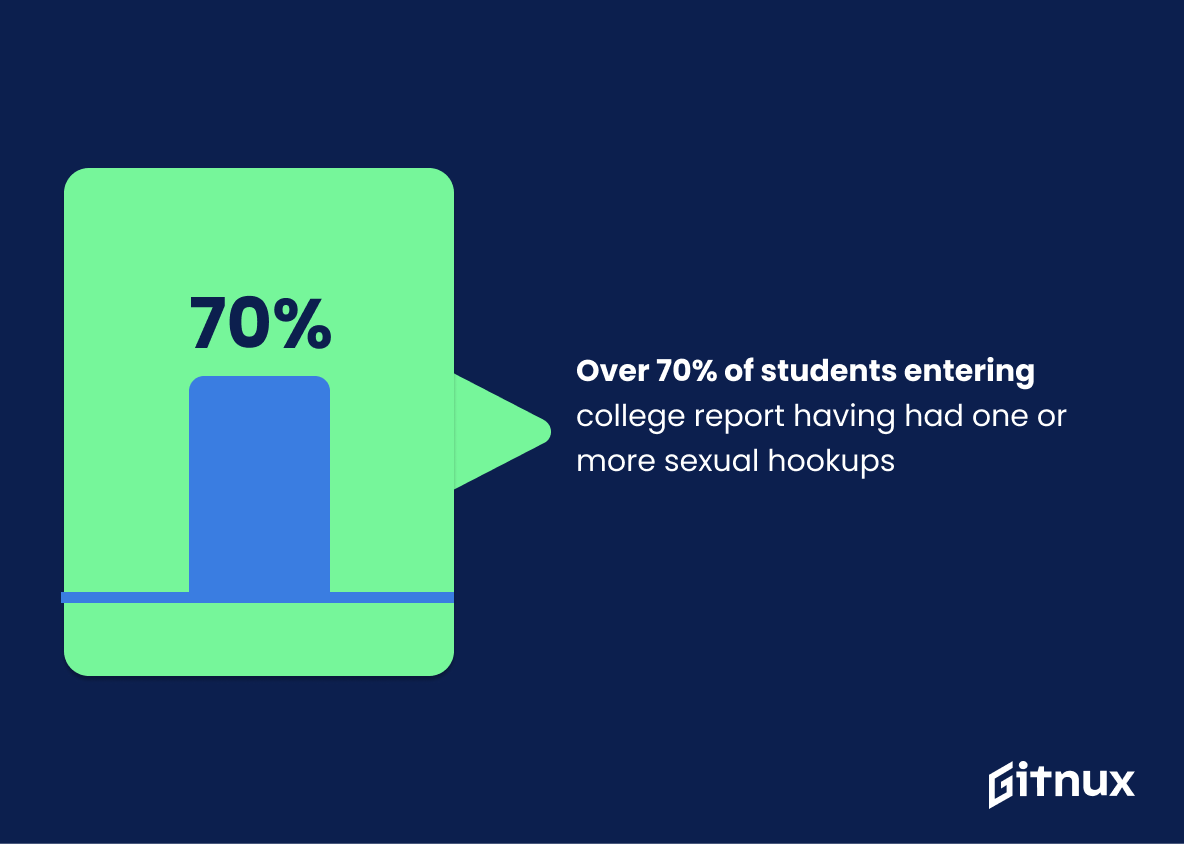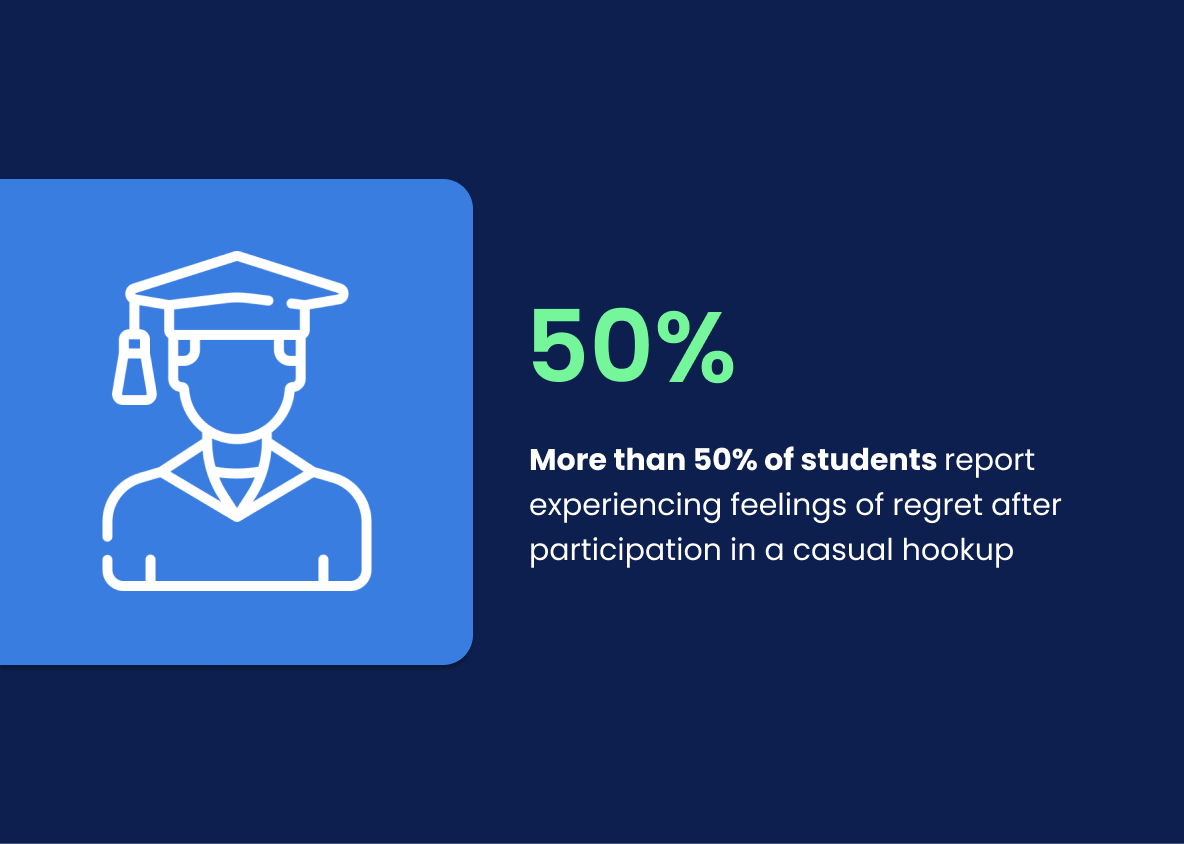Hookup culture is a pervasive part of college life, and it’s important to understand the statistics behind this phenomenon. This blog post will explore 20 different hookup culture statistics from various sources that provide insight into how common casual sex is among college students, what motivates them to participate in these activities, and more. We’ll look at data on topics such as contraception use after hookups, frequency of participation in hookups, satisfaction with past sexual encounters, political views related to participating in hookups and much more. Read on for an overview of the latest research findings about college student behavior when it comes to engaging in casual sex.
College Hookup Culture Statistics Overview
Only 14% of college students report having hooked up with more than 10 people,
This statistic is significant in the context of College Hookup Culture Statistics as it provides insight into the prevalence of hookup culture among college students. It suggests that the majority of college students are not engaging in frequent hookups, and that the culture of casual sex is not as pervasive as it is often portrayed. This statistic serves to challenge the notion that college students are engaging in frequent and casual sexual encounters, and instead suggests that the majority of college students are engaging in fewer hookups than is often assumed.
29% of college students say they hooked up during their first year,
This statistic is a telling indication of the prevalence of hookup culture among college students. It shows that a significant portion of college students are engaging in hookup culture during their first year, suggesting that it is a widespread phenomenon. This statistic is important in understanding the scope of college hookup culture and how it affects the college experience.
About 71% of college students report having at least 1 hookup in their college career,
This statistic is a powerful indicator of the prevalence of college hookup culture. It shows that the majority of college students have experienced a hookup at least once, demonstrating that this type of behavior is commonplace on college campuses. This statistic is important to consider when discussing college hookup culture, as it provides insight into the prevalence of this type of behavior.
Only 36% of college students report engaging in hookup sex repeatedly,
This statistic is significant in the context of a blog post about College Hookup Culture Statistics because it reveals that the majority of college students are not engaging in hookup sex on a regular basis. This indicates that the college hookup culture is not as pervasive as it is often portrayed to be, and that many college students are not participating in this type of behavior.
More than 33% of college students have never hooked up in college,
This statistic is a powerful reminder that college hookup culture is not the norm. It shows that a significant portion of college students are not engaging in this type of behavior, and that there are other ways to experience college life. It also highlights the importance of creating a safe and inclusive environment for all students, regardless of their hookup preferences.
College students who report the use of drugs and alcohol in college are more likely to participate in hookup culture,
This statistic is a telling indication of the prevalence of college hookup culture. It suggests that the use of drugs and alcohol is a common factor in the college hookup scene, and that students who partake in such activities are more likely to engage in hookup culture. This highlights the importance of understanding the implications of drug and alcohol use in college, and the need to be aware of the potential risks associated with such activities.
46.6% of men and 36.5% of women report having more than two hookup partners during college,
This statistic is significant in the context of College Hookup Culture Statistics as it highlights the disparity between the genders in terms of the number of hookup partners they have. It suggests that men are more likely to engage in casual sexual encounters than women, which could be indicative of a wider gender imbalance in college hookup culture.
College students residing in sororities and fraternities are more likely to participate in hookup culture,
This statistic is a telling indication of the prevalence of hookup culture among college students. It suggests that those living in sororities and fraternities are more likely to engage in casual sexual encounters, which is a reflection of the overall hookup culture on college campuses. This statistic is important to consider when discussing the prevalence of hookup culture in college, as it provides insight into the behavior of a large portion of the student population.
Over 70% of students entering college report having had one or more sexual hookups,
This statistic is a powerful indicator of the prevalence of college hookup culture. It shows that the majority of college students are engaging in sexual hookups, suggesting that this behavior is becoming increasingly normalized. This statistic is a clear indication that college hookup culture is a reality and that it is important to be aware of its implications.
More than 50% of students report experiencing feelings of regret after participation in a casual hookup,
This statistic is a telling indication of the emotional toll that casual hookups can take on college students. It highlights the fact that, despite the prevalence of hookup culture, many students are still left feeling unsatisfied and regretful after engaging in casual sexual encounters. This statistic serves as a reminder that, while hookup culture may be pervasive, it is not without its consequences.
In college hookup culture, men are more motivated by physical gratification, whereas women are more motivated by emotional connection,
This statistic is a crucial insight into the motivations behind college hookup culture, as it highlights the stark differences between men and women in this context. It speaks to the gender dynamics at play in college hookup culture, and how these dynamics can shape the experiences of those involved. By understanding the motivations of men and women in college hookup culture, we can gain a better understanding of the culture as a whole and how it affects those involved.
Students with conservative political views are less likely to participate in hookup culture,
This statistic is significant in the context of College Hookup Culture Statistics because it highlights the fact that students with conservative political views may be less likely to engage in casual sexual encounters. This could be due to a variety of factors, such as religious beliefs, cultural norms, or personal values. It is important to recognize that not all students may feel comfortable participating in hookup culture, and this statistic serves as a reminder that there is a wide range of opinions and experiences when it comes to college hookup culture.
Conclusion
Hookup culture is a prevalent part of college life, with statistics showing that over 70% of students entering college have had one or more sexual hookups. However, it appears that many students are not entirely satisfied with their experiences in the hookup scene; only 21% report being content and nearly 60% prefer traditional dating relationships to casual ones. Additionally, men tend to be motivated by physical gratification while women seek emotional connection from these encounters. Furthermore, those who live in sororities and fraternities as well as those who use drugs and alcohol are more likely to participate in this type of behavior than others. Ultimately, understanding the prevalence and motivations behind college hookup culture can help us better understand how young adults navigate romantic relationships during their formative years.
References
0. – https://www.ncbi.nlm.nih.gov
1. – https://www.pubmed.ncbi.nlm.nih.gov
2. – https://www.taylorfrancis.com
3. – https://www.link.springer.com
4. – https://www.tandfonline.com
5. – https://www.researchgate.net
